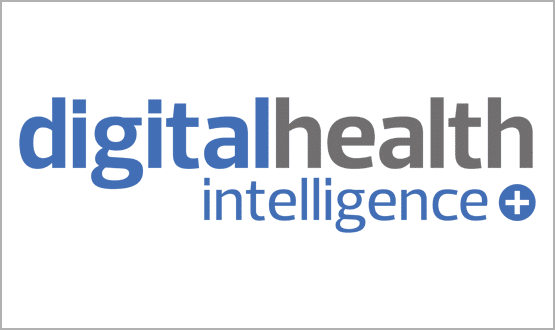The bigger picture: sharing PACs images
- 30 June 2016

The Image Exchange Portal, launched in 2010 by Burnbank, offered a new, slicker way of sharing images between trusts than copying them onto CDs and sending them via taxi. The IEP was eventually adopted by every acute trust in England and now transfers 12,000 images a day.
Although it has worked well, the IEP, now owned by Sectra, has its limitations. It requires a trust to requests an image from another trust, which then uploads the image to a secure network and grants access to the requests.
This push model means that transfer of images isn’t instant, and can also lead to multiple copies of an image being stored at different sites.
The end of the National Programme for IT contracts from 2013 onwards has provided trusts procuring new PACS to find new ways of addressing the image-sharing problem. The two principal approaches, says independent consultant Tony Corkett, are vendor-led and vendor-neutral.
Looking at the cloud
A cloud-based PACS, shared by a geographical cluster of trusts, is one of the most cost-effective solutions. The NHS in Wales, for example, has implemented a single FujiFilm PACS shared by all health boards.
In Scotland, each health board has a Carestream PACS and there is a shared national PACS archive. It’s also the option chosen by the EMRAD collaborative in the East Midlands, currently implementing both a cloud-based PACS and vendor neutral archive from GE Healthcare.
But EMRAD aside, the cloud option has been relatively unpopular, says Corkett, because: “A lot of the decisions taken today are, rightly or wrongly, based on the experience of the national programme.”
Under the NPfIT, images were held in central data centres and proved slow to retrieve. Some trusts are also concerned about the risk associated with storing images offsite, he adds.
Vendors such as Carestream and Sectra now offer the ability to share images between their different instances – what Corkett describes as “almost like a hybrid IEP and VNA”. It’s a solution that has enabled London trusts using Sectra PACs to share images using Sectra’s Cross Platform Worklists.
Cheshire and Merseyside, a collaborative of 11 trusts, chose to implement the same Carestream PACS in each site as well as a single-instance radiology information system, HSS’s CRIS.
Sharron Dyce, PACS manager at the Royal Liverpool University Hospital, says: “The main driver of the procurement was a solution that allowed local storage of images with a search-all connection to join them altogether.”
Having 11 different implementations of the same PACS isn’t cheap, but some trusts didn’t want to risk repeating the painful experience of migrating data back onsite from the local service provider’s central data centre at the end of the NPfIT contracts, says Dyce.
“I think the ideal procurement would have been a cloud-based PACS system between the 11 trusts, so one pot of images rather than separate local PACS. But the culture of the national programme made trusts very protective of their own data.”
Benefits on the ground
In practice, the implementation has worked well. Carestream’s Vue Connect publishes patient metadata, including the NHS Number, to a global worklist, which enables the priors to be displayed automatically in the local PACS from wherever they’re requested.
It means that clinicians can see the patient’s imaging history from every trust in the collaborative. And the technology isn’t dependent on the trust using the Carestream PACS.
Two other local trusts, Wirral and the Countess of Chester, have now implemented Vue Connect, enabling them to share images with the other 11 (Wirral has a Cerner PACS, while the Countess of Chester originally had a GE PACS but has since implemented Carestream).
The Cheshire and Merseyside approach has the additional advantage that it allows five of the trusts to share an on-call radiologist.
“The consortium trusts are all on the region instance of CRIS. It doesn't matter whether it's a study done at Whiston or Warrington, you click on the study in CRIS, and it will open the associated images and priors in PACS,” says Dyce.
Standards make things easier
The emergence of the XDS standard has enabled documents and images to be shared, regardless of the source, through a registry that stores meta-data about each document and image. Although it is not yet universally used, it may offer a long-term solution to the challenge of image-sharing.
Three trusts in the West of England (Royal United Hospital Bath NHS Trust, Bristol University Hospitals NHS Foundation Trust and North Bristol NHS Trust) are piloting Sectra’s extension to the IEP: the XDS-based registry Connect and Share, which enables trusts using PACS from different vendors to see each other’s images and reports.
It could potentially be used to share images and reports between trusts anywhere in the country. Eric Loveday, radiologist and CCIO at North Bristol, says that one of the big benefits of Connect and Share is that clinicians can see the images without needing a separate sign-in.
Quick access to images has improved patient care, he says: “If you're sitting in clinic with a patient and what you do next depends on knowing the imaging has taken place, that's massively beneficial.”
At the moment, Loveday adds, the images have to be viewed in a separate browser, and if the clinicians want to see the image in PACS, they still have to request it via the IEP.
“From our perspective, we would like to have it integrated into the PACS so that clinicians don’t even have to go somewhere else.” This requires all PACS vendors to become XDS-compliant – something that is not yet the case.
Pros and cons of VNAs
The most ambitious solution to image-sharing is to install a vendor neutral archive, an XDS-based repository that can store not just radiology images, but images from cardiology, ophthalmology and other “ologies”.
A VNA is therefore a solution for the hospital as a whole, not just the radiology department. Its big advantage is that it separates data from the applications that created it, though another plus, says Corkett, is that if all imaging data is held in a single repository, it’s possible to “analyse that very quickly and very easily and very effectively”.
Trusts that have implemented VNAs can share images through an XDS-based registry, though it’s also possible for a group of trusts to share a single VNA. (The Salisbury, Wight and South Hampshire collaborative of six trusts, which initially shared images through a Sectra PACS, was planning to move to using its federated VNA for that purpose).
But VNAs are expensive, and can be complicated to implement – in part, says Tony Tomkys, vice president UK and Ireland at VNA vendor Bridgehead, because trusts still have different systems for identifying patients.
“There has to be a single registry, and there has to be a master patient index, because there has to be a single source of the truth.”
Tomkys argues, however, that VNAs are a strategic investment, offering long-term benefits. “If you separate the data from the application that creates it, and you create a central repository that is truly neutral, where any data from any ology can be migrated, held and transformed in a neutral format, then all of that data can be searched for and accessed by anyone who has a right to look at it,” he says.
Although few trusts so far have opted for the VNA as a method of cross-enterprise image-sharing, that may change as more consortiums, tactical NPfIT extensions coming to an end, go out to procurement.
In Yorkshire, a collaborative of nine trusts has gone out to tender to procure a scalable solution that will enable them to share images. Cindy Fedell, chair of the regional imaging consortium, finds the idea of a VNA appealing because of its flexibility.
But the consortium, she says, is currently open-minded about the architecture. “As long as it achieves the idea that there's one image for one test, and that we all use that one, that's fine. You could have a database that is stored in ten physical locations that is logically one database and behaves as one database, or you could have it all in one physical location.”
Fortunately trusts now have options that extend beyond dispatching CDs in taxis. But each option has its pros and cons, says Corkett: “It depends on a number of different factors – there is no one perfect answer.”





